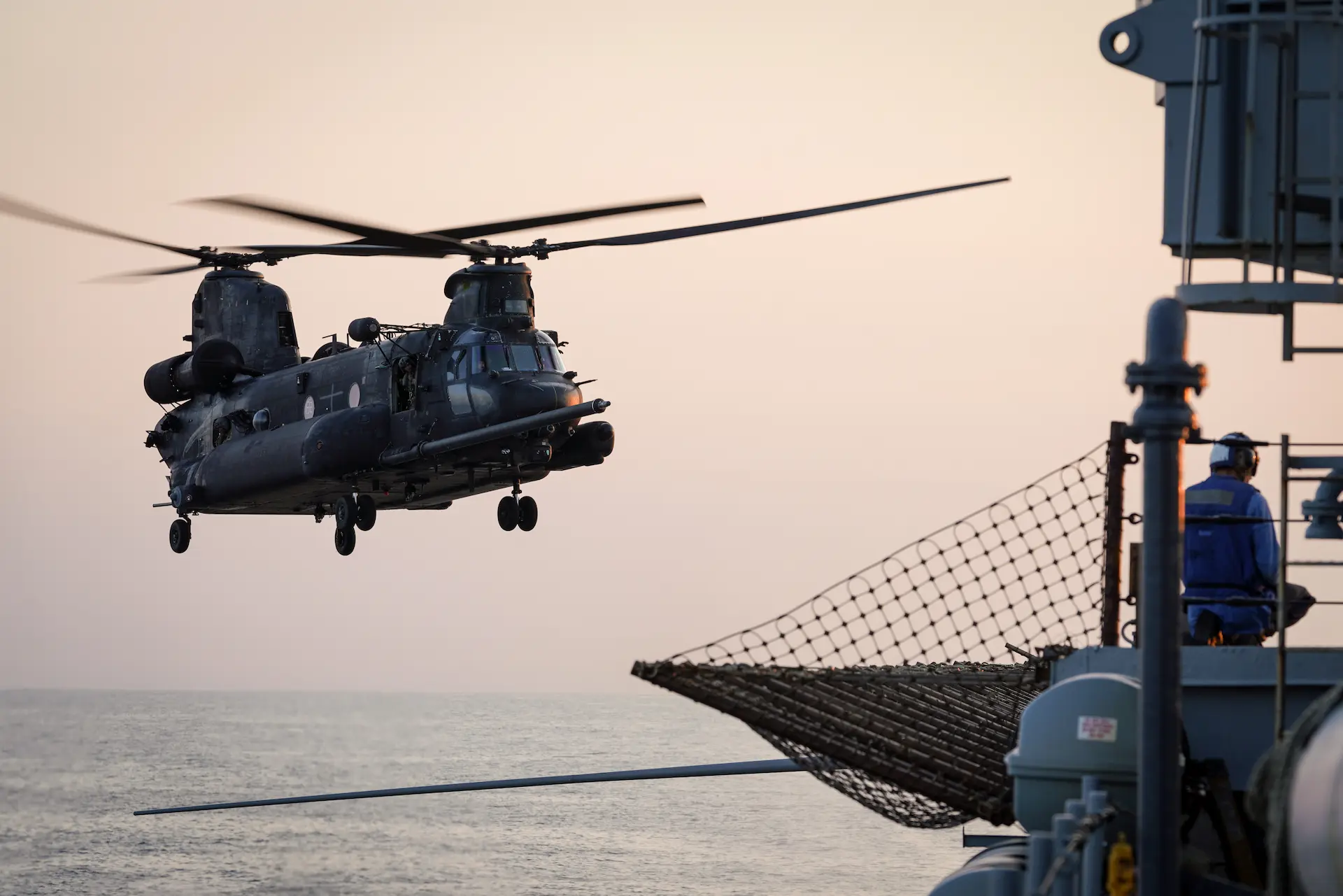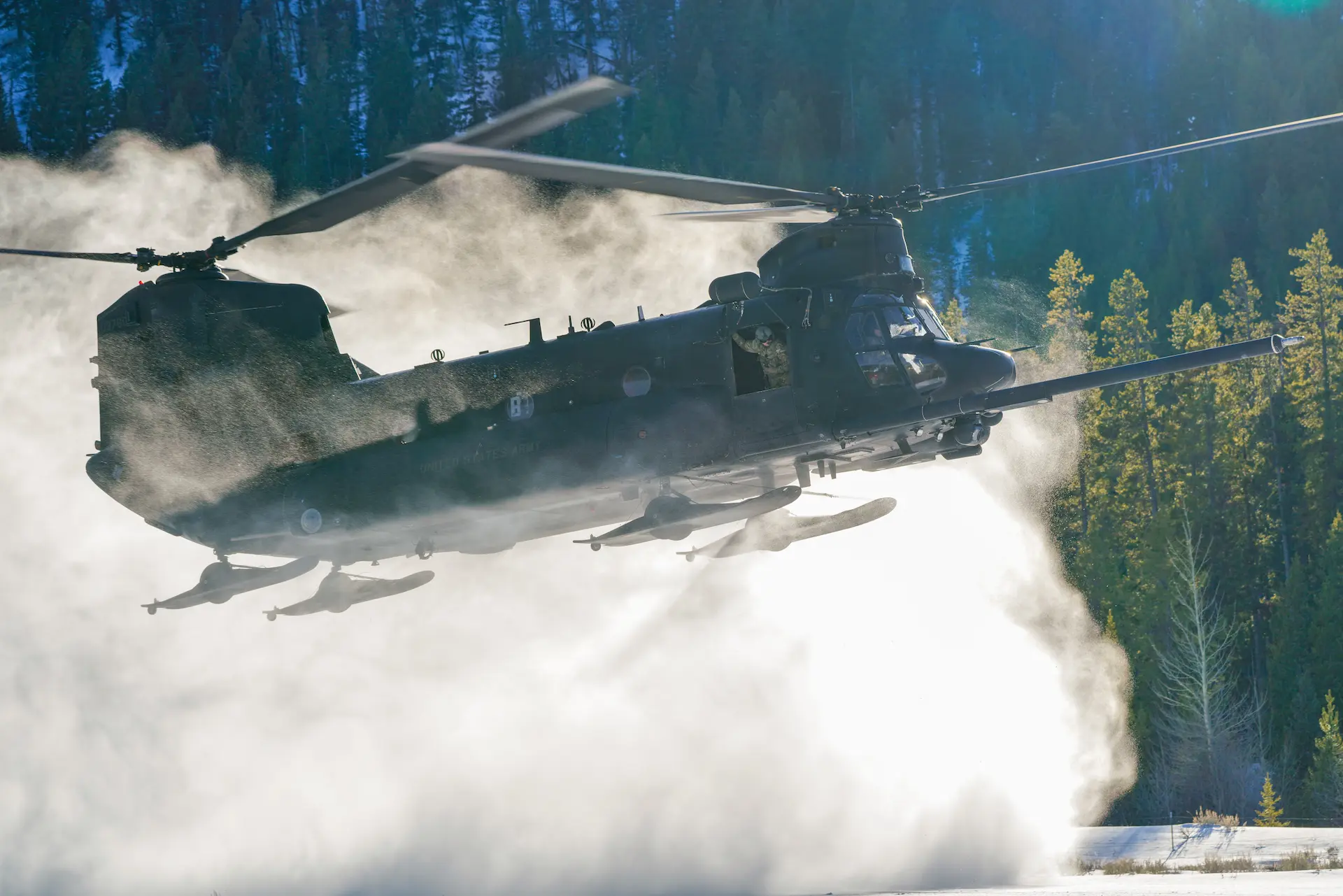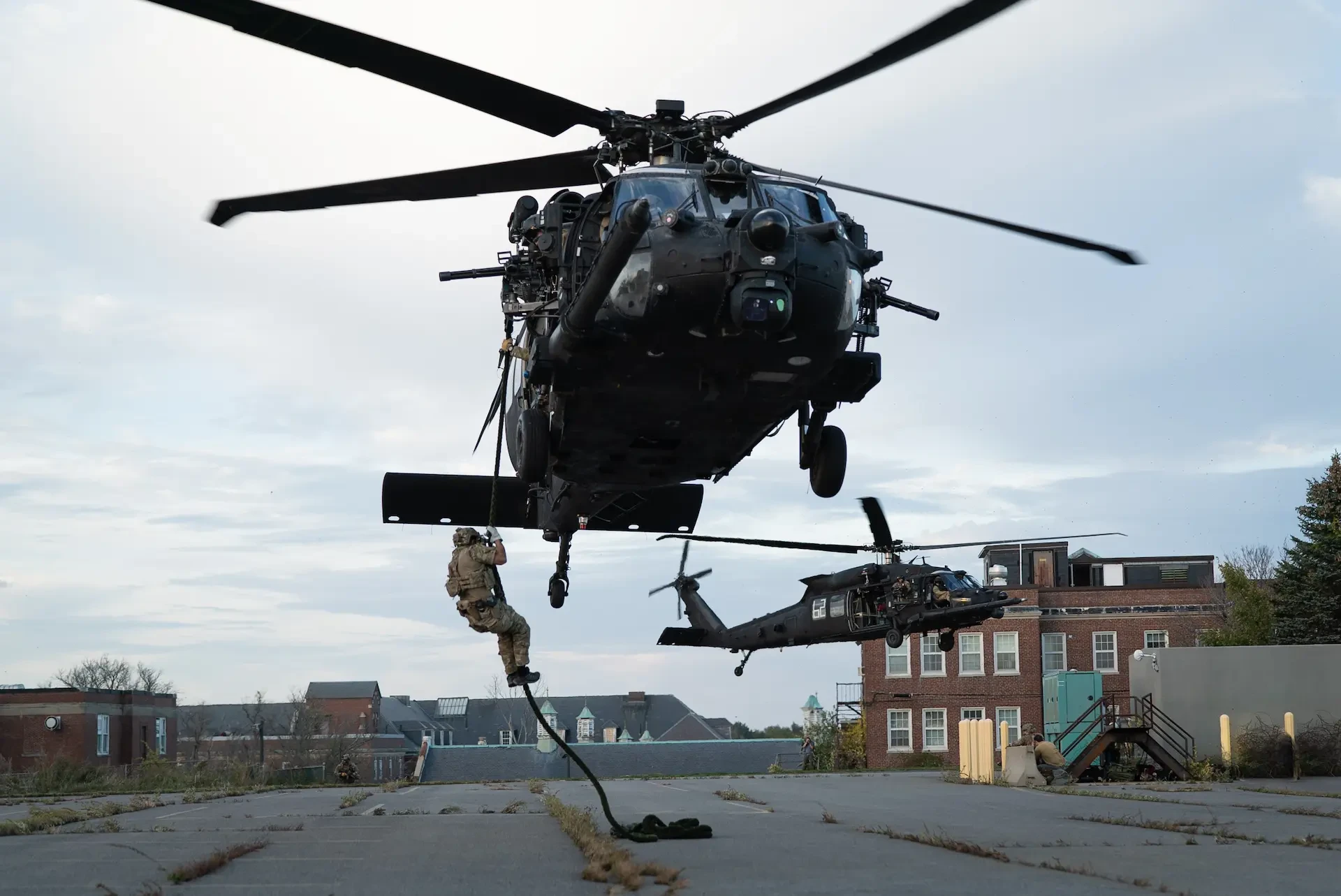One of the most significant decisions a person can make is to join the military and serve their country. Equally important though are the follow-up choices of which specialty to select and what unit to aim for. Even within the US army, however, many are not aware of one of its most challenging, prestigious, and rewarding postings, the supremely capable 160th SOAR(A).
Headquartered at Fort Campbell, Kentucky, the 160th Special Operations Aviation Regiment (Airborne) – nicknamed the Night Stalkers – consists of the Army's best-qualified aviators, crew chiefs, and support soldiers. Although not nearly as well-known as such special operations units as Delta force and the Rangers, the regiment is the primary helicopter support to Special Operations Forces (SOF) of the US Department of Defense (DoD) and has a long and extensive record of virtually continuous combat service in a multitude of theatres, providing insertion/extraction, attack, assault and reconnaissance support. Wider recognition of the regiment’s composition, achievements and capabilities has been hampered by the understandable tendency to downplay any of its activities, due to the often covert or secretive nature of its deployments and operations.
.webp)
The 160th constantly continues to train for and conduct helicopter combat and covert operations at night using NVGs (night vision goggles) and FLIR (forward looking infrared) systems. The nature of the unit’s missions means that they fly predominantly at night, at short notice, low altitudes, and high speeds, and this necessitates the highest standards of training, skill, discretion and professionalism from every member of the regiment. Master Sergeant Luke Backes is second-in-charge of the 160th’s recruiting unit, joining the regiment in 2008 after an initial two years in the Army as a Blackhawk crew-chief. He advised that the current year’s recruiting mission is for almost 680 enlisted personnel and 135 officers over around 60 MOSs (military occupational specialties) and although the aggregate total is being met, there is a shortfall in specific MOSs.
Shortfall
“MOS-15U Chinook mechanics is one of those specialties that we struggle to fill, as we operate around a quarter of all the Army’s Chinook mechanics and there is not a sufficiently large pool available to recruit from, so we’ve been trying to use Option-1,” Backes stated, explaining that this relatively new program aims to recruit people with no prior service – ‘from street to seat’ – in which the new recruits sign a contract and go into a training ‘pipeline’ that leads directly to a position in the Night Stalkers unit for successful candidates. “That’s helped us a little bit and we got about fifty Chinook mechanics through Option-1 last year, but we’re still about 100 shy of our full recruiting requirement of 200 per year.” Option-1 provided a total of just over 100 new recruits for the regiment last year and that was with little or no familiarity with the new program among most recruiters. Backes expects that number to increase now that extensive education throughout the Army has increased awareness of Option-1 and how best to utilize it.
Backes advised that the unit typically sits between 85 and 90 percent of the requirement for Chinook mechanics, while the rest of the Army usually maintains 100 to 105 percent. “We can still operate effectively at those numbers, but not optimally. That’s on the enlisted side, while on the officer side we’re still about fifteen short of our requirement for commissioned pilots,” he added. The reason for the difficulty in recruiting and retaining pilots is that there is such a strong incentive for them to leave the Army after a term or two of service for much more lucrative employment in the civil sector. Backes also noted that another aspect the recruiters are battling with is that the Army, as a whole, is not flying as much so there are far fewer pilots reaching the minimum flight experience levels required for service with the 160th.
Pilots
Current minimum flight experience requirements are 500 flight hours or 50 hours pilot-in-command. “Only about one third of pilots we speak to meet those requirements, and many of those are too senior or are getting out of the Army in the near future so we only have a very small percentage of the pilot pool to recruit from,” he explained. Additional requirements for anyone considering the 160th are standard USASOC demands such as minimal outstanding personal debt, US citizenship and the ability to gain/maintain a secret security clearance, with social media activity an issue to consider in a very few cases but becoming increasingly common. Pilots who join the 160th can choose the airframe they wish to fly and will often get their preference, but attack pilots must be former AH-64 Apache pilots. The regiment operates variants of the MH-60M Blackhawk, the heavy-lift MH-47G Chinook and the MH/AH-6M Little Bird. The 160th’s aircraft are highly modified/retro-fitted with extensive sensor, night vision, communication, radar and weapon systems, many are equipped with refueling probes and the unit has even developed an in-house DAP (direct action penetrator) modification for the Blackhawks that turns them into attack gunships.
.webp)
Training
New recruits to the unit are assigned to ‘Green platoon’, the 160th’s training section, and Backes explained that the reason for the high recruiting mission goal was to fill the existing staffing shortfall, cover normal attrition and allow for the high percentage of failure to successfully pass Green platoon training – typically around 70-80 percent, although the pass rate is gradually improving. Between ten and twenty-five percent ‘wash out’ prior to commencing class work at Green platoon, as they fail to meet the physical and fitness requirements, or do not pass the initial psychological screening that measures such factors as propensity for risk.
Nevertheless, according to Backes most MOS recruiting targets are relatively easily filled, with some specialties such as sig-int, support, supply, MOS-15T Blackhawk crew-chiefs and MOS-68W medics attracting so many applicants that some have to be turned down.
Once the Option-1 intake number has stabilized it can be used to establish a baseline for the overall recruiting mission numbers though, which will hopefully decrease due to the higher Green platoon pass-rate that Option-1 volunteers have demonstrated.
Recruiting
The 160th’s recruiters attend numerous high-visibility career and recruiting events and an increasing focus is on utilizing any digital and multi-media platform that can reach the current tech-savvy and phone-focused digital generation. The majority of applicants for the regiment, however, still come from the Army’s twelve CABs (combat aviation brigades), each of which typically operates with 500 to 800 personnel. “Once a month typically we’ll travel to each one, hold briefings all week and have face-to-face interaction and recruit as many as we can from that, and at each of those stations we have a full-time special operations recruiter that liaises with us and sends us personnel packets all year long. Not all personnel at a CAB will be available to us though, as they may not be in the MOSs we’re looking to fill, not be the appropriate rank, they may already have orders for somewhere else or not have yet served the minimum twelve months on station that we require. That eliminates almost half of the CAB complement right there,” said Backes.
He went on to explain that he preferred applicants to not be too senior, as the training pipeline can take anywhere from six months to two years, depending on the MOS, before the candidate is ready for operational service and deployable with the unit. “If they came out of Green platoon and all the other necessary training courses as a staff sergeant with little operational unit experience that would just make it unreasonably hard on them. If someone comes to us with only about one year’s experience in the regular Army, they know just enough to understand what’s going on but not yet be inculcated with tendencies and experiences that don’t match what the unit needs.” When recruiting numbers fail to meet requirements from volunteers, Army HRC (human resources command) can and does pick appropriately qualified personnel and post them to the 160th, but the training pass-rate for such members is understandably lower than that for volunteers. According to Backes, the ratio of Green platoon appointees to volunteers in past years was typically around four-to-one, and he considers improving that ratio to be possibly his greatest achievement in his current position. “That was eighty percent of people that didn’t necessarily want to be here,” he pointed out. “But on this last class at Green platoon and for the first time since we’ve kept records, we had 100 percent volunteers. The last three classes have all been 90 percent or above.”
Recruiting is an evolving position, as society and people’s expectations change over time. “There are generational differences that we’re only starting to understand. Compared to previous generations, Generation-Z is far less concerned with money and less likely to be committed to a long-term career,” Backes commented. This means that the financial and job security aspects of a military career that have traditionally made it desirable are now much less attractive to younger people. Perhaps surprisingly however, service to country is still a major motivating factor, with almost 80 percent of respondents in a recent poll at Fort Bragg citing it as a principal reason for their selecting a military career. Recognition of this changing employment environment is reflected in the Army’s current motto; ‘Be all you can be’.

Why the 160th?
When asked why he believes the Night Stalkers to be the best unit to join in the US Army, Backes is very clear. “To me, joining the 160th, rather than any other career field within the Army, is a no-brainer for several reasons. For one, the mission is great and exactly what most people want to do when they join the Army. You’re doing important missions every day that matter to national security and can be anywhere around the world. Because you spend most or all of your time on your primary mission set, you get far less additional duties added to your plate than if you were in the ‘big Army’. The level and amount of training that you get is exceptional, and then there are the people that you work with. Everyone now is heavily screened, selected and assessed so when you get here, you’re surrounded by like-minded people that want to excel at their job and that have personal and career goals that match yours. The final aspect for me is that you serve with many of the same people for year after year and get to know each other extremely well, making for a really tight-knit family atmosphere. Although people who aren’t already in the Army have a multitude of career options, joining the 160th guarantees you a quality of life, training, a skillset and a camaraderie that you can’t guarantee yourself in other industries, even though the pay might be great.”
Unlike most other units within the Army, the 160th encourages a high level of initiative and autonomy. “It’s built into the DNA of this unit and its leadership that you get freedoms that you wouldn’t necessarily get in the regular Army. What that means is that you’re told what to do but not how to do it, which gives you the creative freedom to express your talents and work-ethic to conduct a mission in a way that is yours. That is how a lot of our innovations have come about over time, having leaders throughout the chain of command that support the principle of creative thinking, and someone who is ambitious and creative will thrive in this environment,” Backes opined. In his eighteen months in recruiting, Backes has streamlined packet processing, put the right people in the right position and modernized/streamlined recruiting methodology and platforms. This has taken packet receipts from 200-300 per year to about 1,000 annually; an impressive illustration of how the unit’s support for individual initiative and creative thinking reaps major benefits.
.webp)
Backes related that his own introduction to the 160th came during a deployment in Iraq. “I was working night shift and as the sun was coming up, I saw three Blackhawks fly over, obviously returning from a mission. The miniguns were out the doors, ground troops were sitting with their feet out the open doors and that was certainly not how we flew our aircraft. They landed in a walled compound, and I asked our senior guy who they were. When he explained a bit about what the 160th was and what they did, I knew that was where I wanted to be.” The 160th boasts more actual combat and conflict experience than almost any other Army unit over the last few decades. Even during times of peace, if the crap hits the fan anywhere in the world and it involves the USA, the Night Stalkers will be there.
You may not have heard of the 160th, but it’s almost certain that you’ve seen them often on the news. When Special Forces are seen inserting from a Blackhawk or Chinook, or a Little Bird is seen in active combat, it’s a pretty safe bet that they are Night Stalkers aircraft and crews.
For any American who wishes to serve their country, the 160th SOAR(A) offers a military career that allows uncommon autonomy, intense fellowship and camaraderie, a shared extreme level of competence and a genuine care for people over hardware, with the regiment treating personnel as the highest priority. Undeniably, service with the 160th should be a goal for any soldier or aviator wanting to be at their very best, among a cohort of excellence.

 HOME
HOME



